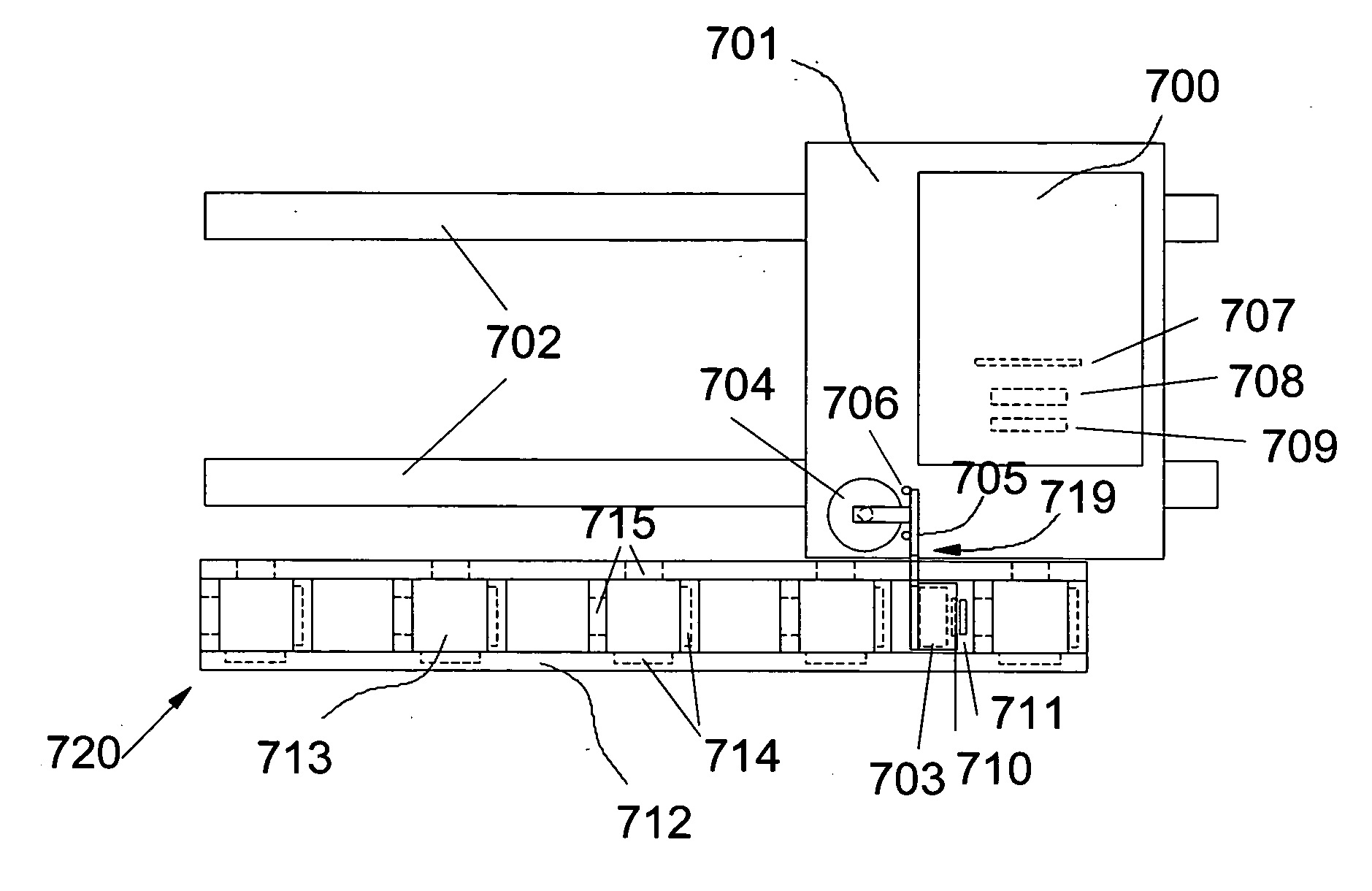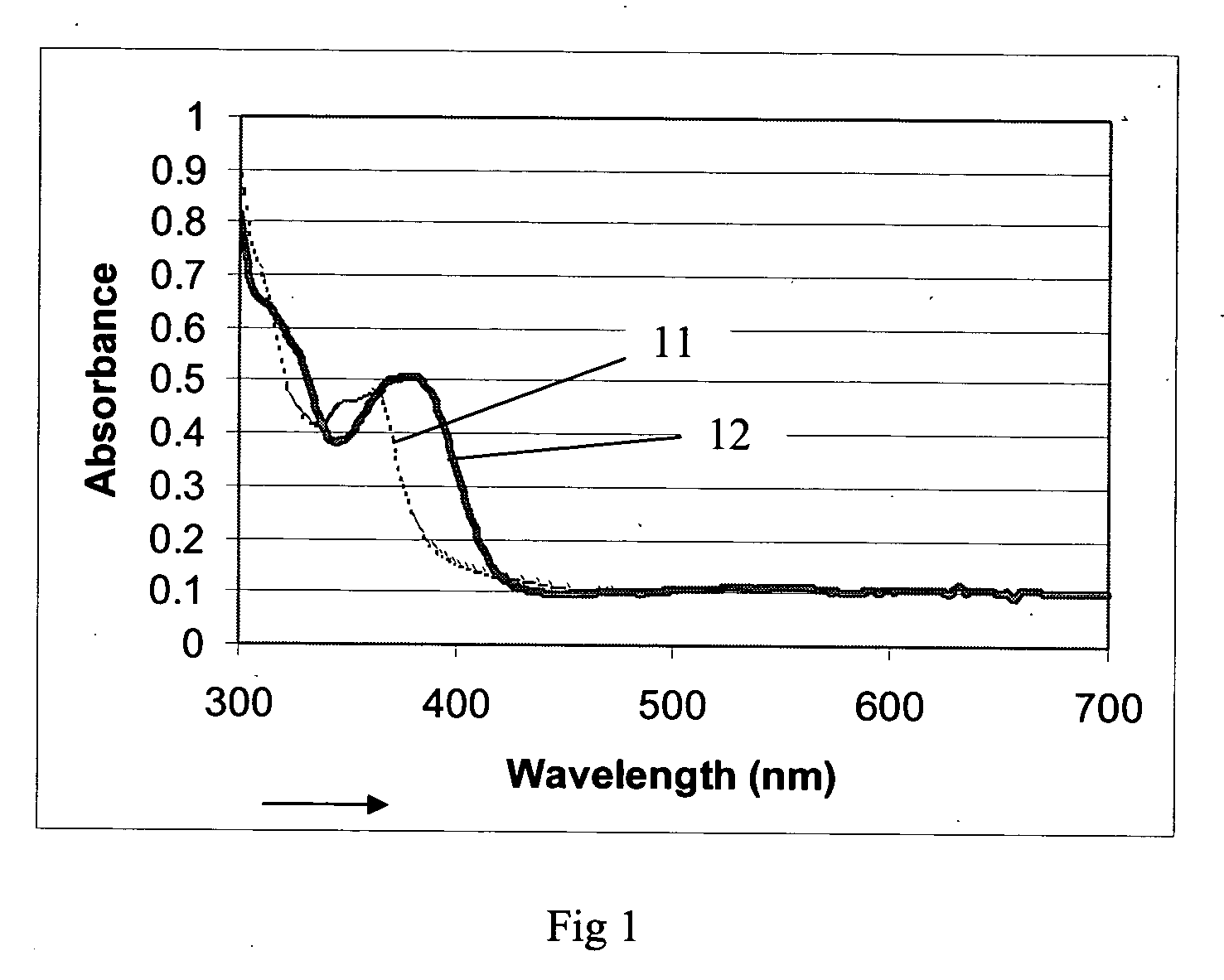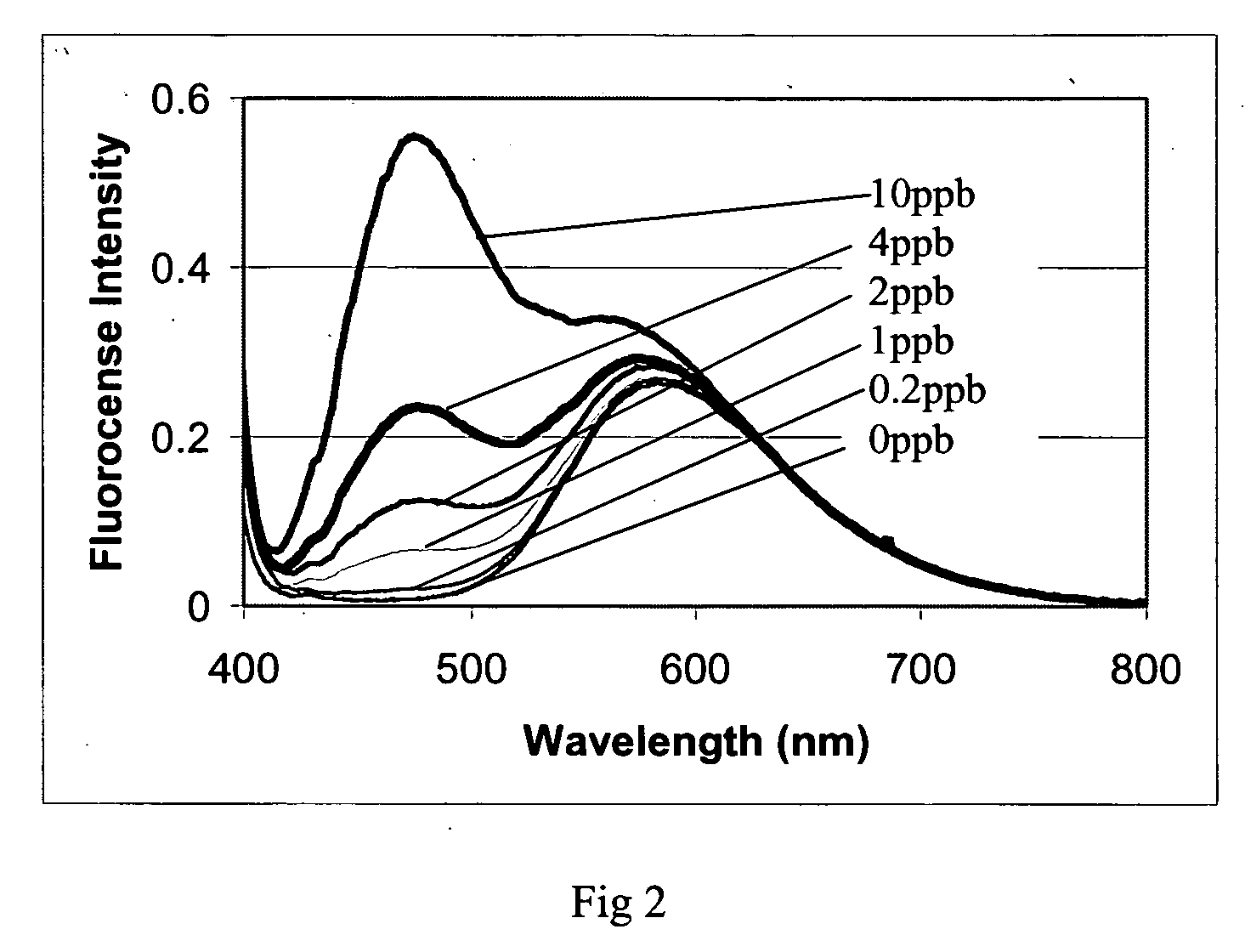Method and kits to detect beryllium by fluorescence
a technology of beryllium and fluorescence, applied in the direction of fluorescence/phosphorescence, optical radiation measurement, instruments, etc., can solve the problems of deterioration in breathing capacity and ultimately death, disease persisting cases, and onset of disease can take decades to achiev
- Summary
- Abstract
- Description
- Claims
- Application Information
AI Technical Summary
Benefits of technology
Problems solved by technology
Method used
Image
Examples
example 1
Effect of Temperature
[0053] A fluorometer from Barnstead International (model FM109515) was used in this experiment. For excitation a narrow band filter (NB360 spectra is shown in FIG. 3) and for emission a narrow band filter (NB460-spectra is shown as 41 in FIG. 4) were used, both of these supplied by the instrument manufacturer. Detection solution was made by using 1.7 liters of deionized water (18 Mohms), 19.51 g of lysinemonohydrochloride, 1.99 g of EDTA disodium dihydrate, 0.0367 g of HBQS and then titrating this with a solution of 2.5N sodium hydroxide to a final pH of 12.85. 1.9 ml of the detection solution was poured in a fluorescent plastic cuvet. 0.1 ml of ammonium bifluoride solution comprising beryllium was added to the cuvet. Four different concentrations of beryllium solutions were prepared by adding 0.1 ml of 0, 2, 5 and 10 ppm standards. These were used to calibrate the fluorometer. The calibration was a straight line with a correlation coefficient of 0.99. Sample w...
example 2
Dissolution Solution to Detection Solution Ratio
[0054] A dissolution solution with 1% ammonium bifluoride and a detector solution were made as described in example 1. These solutions were mixed in different ratios and their pH measured. These data show that a ratio of 1:4 (dissolution solution to detection solution) still resulted in a pH in excess of 12.
DissolutionDetectionVolumetric ratio of “Dissolutionsolution (ml)solution (ml)solution:Detection solution”pH0.11.91:1912.460.41.61:412.160.51.51:311.391.01.01:18.55
PUM
| Property | Measurement | Unit |
|---|---|---|
| wavelength | aaaaa | aaaaa |
| temperature | aaaaa | aaaaa |
| temperature | aaaaa | aaaaa |
Abstract
Description
Claims
Application Information
 Login to View More
Login to View More - R&D
- Intellectual Property
- Life Sciences
- Materials
- Tech Scout
- Unparalleled Data Quality
- Higher Quality Content
- 60% Fewer Hallucinations
Browse by: Latest US Patents, China's latest patents, Technical Efficacy Thesaurus, Application Domain, Technology Topic, Popular Technical Reports.
© 2025 PatSnap. All rights reserved.Legal|Privacy policy|Modern Slavery Act Transparency Statement|Sitemap|About US| Contact US: help@patsnap.com



